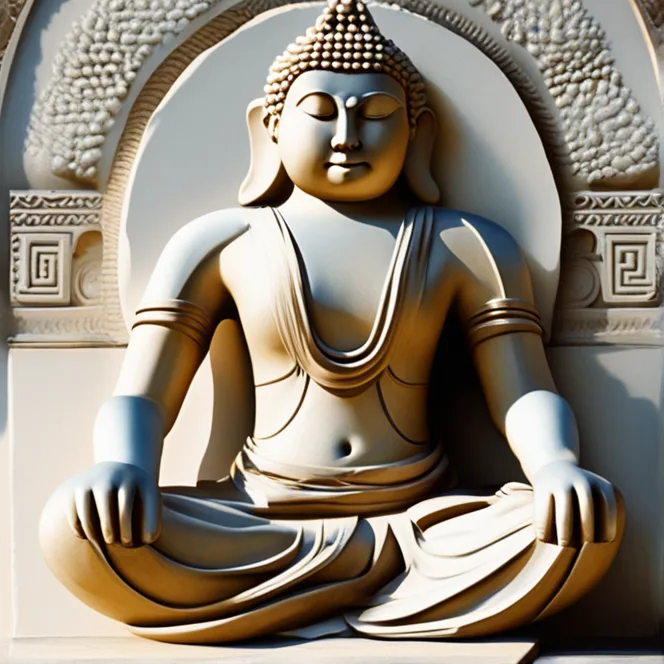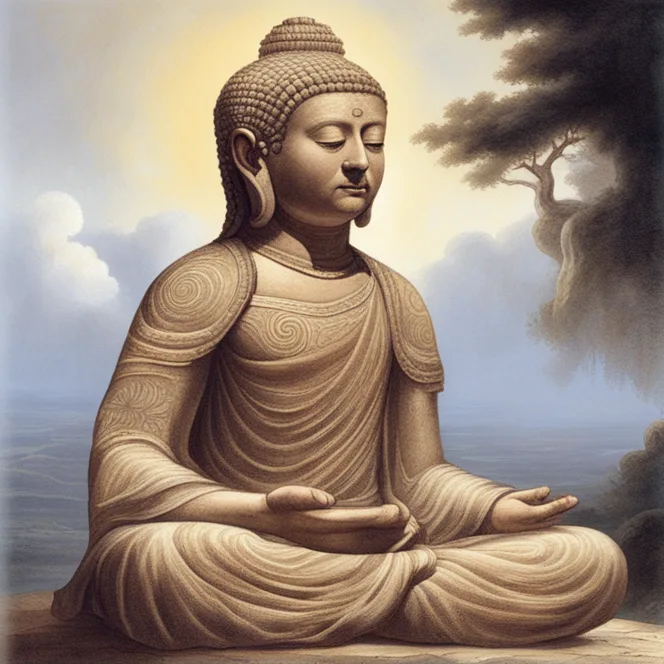
The Origins Of Meditation: A Journey Through Time
Explore the historical roots of meditation, from ancient traditions to modern practices in this concise guide.
article by Hina Kurosawa
The Dawn of Meditation
Meditation, a practice as ancient as civilization itself, has been an integral part of human spiritual development. Historical documents suggest meditation was present in the wisps of early history, primarily within the traditions of Eastern cultures. The Vedas, ancient Hindu scriptures, are some of the earliest records highlighting meditation rituals dating back to 1500 BCE. These texts describe meditation as a means to connect with the divine, recognizing it as a crucial spiritual element. This primordial form began with simple forms of concentration and has evolved over centuries into various complex practices. It’s important to note that while meditation is rooted deeply in religious practices, its essence transcends the boundaries of any one faith.

Buddhism and Meditation
Arguably, the most significant evolution of meditation occurred with the teachings of Siddhartha Gautama, the Buddha, around 500 BCE. The practice became a cornerstone of Buddhism, which spread throughout Asia, morphing into myriad forms along the way. It involves mindfulness and concentration, focusing mainly on the breath and the present moment to achieve a state of serene awareness. Zen practices, emerging from the Mahayana school of Buddhism, further emphasized meditation’s role in the quest for enlightenment, encouraging a sitting meditation known as 'zazen' to gain insight into the nature of existence and the self.

The Spread to Western Societies
The Silk Road not only facilitated the trade of goods but also the exchange of cultural practices, including meditation. By the Middle Ages, meditation had percolated into Western thought, albeit sporadically. It wasn't until the 20th century that meditation began gaining significant ground in the West. Pioneers such as Swami Vivekananda and Maharishi Mahesh Yogi played pivotal roles in bringing Eastern meditation techniques to Western audiences where they were stripped back from their religious contexts and taught as methods for relaxation and stress reduction. This adaptation paved the way for modern mindfulness and secular meditation practices.

Scientific Acknowledgment and Acceptance
The latter part of the 20th century saw a surge in scientific interest in meditation. Researchers began studying the effects of meditation on the brain and the body, finding evidence of numerous health benefits such as reduced stress, improved concentration, and overall well-being. This scientific validation further embedded meditation into mainstream health and wellness narratives. As a result, meditation is now often recommended alongside traditional medical treatments for a variety of conditions, signifying a remarkable transition from esoteric ritual to a widely accepted health practice.

Meditation in Contemporary Times
In the digital age, meditation has adapted once more: online courses, apps, and virtual reality experiences have brought it into the 21st century, making it more accessible than ever. Today, people of all walks of life incorporate meditation into their daily routines, often as an antidote to the frenetic pace of modern life. Its universal principles make it relevant across various cultural contexts. Furthermore, there's a growing trend of integrating meditation into educational institutions and corporate environments, emphasizing its importance not only for personal growth but also for enhancing professional well-being and productivity.
Published: 12/6/2023
Modified: 12/6/2023
More predictions
Come back here soon to learn more about yourself and your future


Meditation: Beyond Mere Relaxation
Explore how meditation transcends being merely a relaxation technique to offer profound benefits for mind, body, and spirit.


Meditation & Mindfulness: Are They One & the Same?
Delve into the similarities and differences between meditation and mindfulness to understand how both practices can contribute to a more serene life.


Mindfulness-Based Stress Reduction Techniques
In today's fast-paced and often chaotic world, the importance of managing stress and promoting mental well-being cannot be overstated. One approach that has gained widespread recognition for its effectiveness in reducing stress and enhancing overall quality of life is Mindfulness-Based Stress Reduction (MBSR). Developed by Dr. Jon Kabat-Zinn in the late 1970s, MBSR has become a cornerstone of mindfulness-based practices. In this article, we will explore the principles and techniques of MBSR and its profound impact on stress reduction, mental health, and overall well-being.